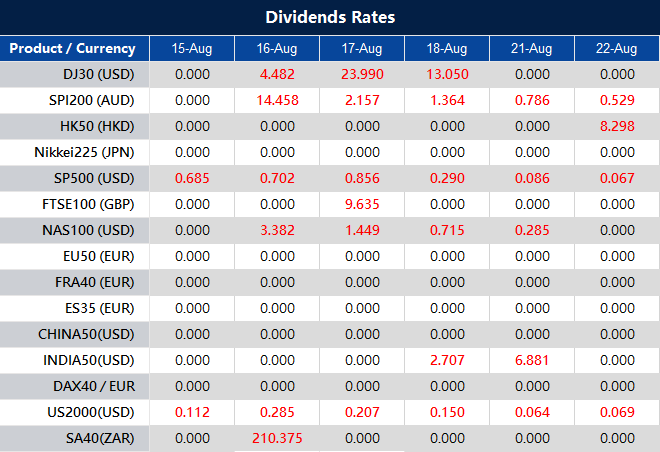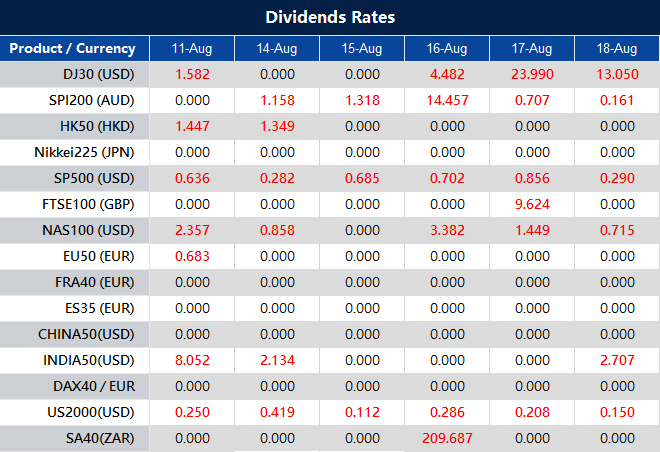Stock markets experienced declines on Wednesday as investors absorbed insights from the Federal Reserve’s July meeting, which hinted at the possibility of raising interest rates. The Dow Jones Industrial Average dropped by 0.52%, concluding at 34,765.74, while the S&P 500 decreased by 0.76% to settle at 4,404.33. The Nasdaq Composite also saw a decline of 1.15%, ending the day at 13,474.63. This marked the second consecutive session of losses for the major indices.
During the July meeting, the Federal Reserve officials discussed the potential need for further tightening of monetary policy to counter ongoing inflation. The meeting summary highlighted that most participants recognized significant upside risks to inflation due to it remaining above the Committee’s longer-term goal. The current federal funds rate lies within a range of 5.25% to 5.5%, reaching its highest point in over two decades. The markets’ reaction to the meeting minutes reflected concerns about the economic backdrop and the potential need to curtail demand in order to achieve price stability. Consequently, market sentiment was impacted, leading to declines across various sectors, with Intel and other industries experiencing notable drops.

Data by Bloomberg
On Wednesday, a broad decline was observed across all sectors of the market, with the overall market dropping by 0.76%. Some sectors managed to buck the trend, with Utilities gaining 0.46%. However, most sectors faced losses: Financials were down by 0.21%, Consumer Staples by 0.28%, Industrials by 0.55%, Materials by 0.66%, Health Care by 0.78%, Information Technology by 0.88%, Energy by 0.90%, Real Estate by 1.20%, Communication Services by 1.21%, and Consumer Discretionary by 1.27%.
Major Pair Movement
On Wednesday, the dollar index experienced a slight increase, recovering from earlier losses. This recovery was attributed to better-than-expected U.S. housing and industrial production data, as well as rebounding Treasury yields compared to euro zone yields. The release of Federal Reserve meeting minutes further supported the dollar’s performance later in the session. However, the dollar’s gains were somewhat limited by strong UK inflation data, which maintained expectations for a rate hike by the Bank of England (BoE) and boosted the pound.
Amid robust U.S. retail sales figures and ongoing uncertainties surrounding China’s economic stability, the dollar continued to attract interest from investors. The Fed meeting minutes aligned with previous indications, hinting at a potential additional rate hike, contributing to the extension of Treasury yields and the dollar’s turnaround from earlier losses.
The EUR/USD pair declined by 0.24% due in part to negative spreads between 2-year bund and Treasury yields. Sterling, while retreating from its Wednesday high, still gained 0.17% on the back of increased gilts-Treasury yields spreads, driven by strong UK core price growth, rising services inflation, and record-breaking basic earnings.
The USD/JPY pair saw a 0.47% increase, benefiting from rising Treasury-JGB yield spreads and breaching resistance levels. Risk-off sentiment stemming from China’s situation and recent rate cuts led to declines for the Chinese yuan (CNY) and the Australian dollar (AUD), with the latter hitting a 9-month low and the former nearing its 2022 record high.
Picks of the Day Analysis
EUR/USD (4 Hours)
EUR/USD Hits Lowest Level Since July Amidst Resurgent US Dollar Strength
The EUR/USD pair broke below the 1.0900 mark during the American session, marking its lowest point since early July, driven by the robust US Dollar. The US Dollar’s momentum was bolstered by higher US Treasury yields and cautious market sentiment, with the DXY testing July highs near 103.50. Despite mixed US data, the Federal Open Market Committee (FOMC) minutes revealed a cautious stance, hinting at potential rate stability. While some FOMC members expressed concerns about further tightening, the US Dollar regained strength, with the EUR/USD pair facing the prospect of extended losses amidst a backdrop of waning market sentiment and a resurgent Greenback.

Based on technical analysis, the EUR/USD moves lower on Wednesday, creating a push for the lower band of the Bollinger Bands. Currently, the price is moving around the lower of the Bollinger Bands. The Relative Strength Index (RSI) presently stands at 34, signifying that the EUR/USD is currently in a bearish sentiment.
Resistance: 1.0935, 1.1038
Support: 1.0865, 1.0789
XAU/USD (4 Hours)
XAU/USD Holds Above $1,900 as US Dollar Dominance Persists Amid Positive Economic Signals
Spot gold maintains a position just above the $1,900 threshold as the US Dollar retains its strength in a risk-averse climate, supported by favorable US data. July’s report showed a 0.1% month-on-month increase in Building Permits and a substantial 3.9% rise in Housing Starts, surpassing expectations. Additionally, Industrial Production climbed by 1%, while Capacity Utilization reached 79.3%. These figures, coupled with upbeat Retail Sales and the perception that the Federal Reserve is concluding its tightening phase, fuel optimism that the US economy is steering clear of a significant downturn. The imminent release of the July meeting Minutes from the Federal Open Market Committee (FOMC) prompts anticipation for insights into future monetary policy. Market consensus leans toward the Fed maintaining its stance in September and possibly throughout the year, with a potential shift toward rate cuts in 2024. The labor market’s persistent tightness remains a focal point for the data-driven central bank. Odds favoring a September hold stand at 88.5%, while the probability of a 25 basis points hike in November is at 36.2%, according to the CME FedWatch Tool, as markets seek confirmation on the trajectory beyond September. While definitive answers may be unlikely, the FOMC document offers a chance for further clarity.

Based on technical analysis, the XAU/USD witnessed a slight decrease on Wednesday, the price managed to create a push for the lower band of the Bollinger Bands during this movement. Currently, the price is moving at the lower band of the Bollinger Bands. The Relative Strength Index (RSI) is currently at 28, indicating that the XAU/USD pair is exhibiting a somewhat bearish sentiment.
Resistance: $1,899, $1,912
Support: $1,892, $1,885
Economic Data
| Currency | Data | Time (GMT + 8) | Forecast |
|---|---|---|---|
| AUD | Employment Change | 09:30 | 14.6K |
| AUD | Unemployment Rate | 09:30 | 3.6% |
| USD | Unemployment Claims | 20:30 | 240K |


















